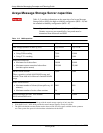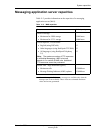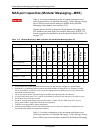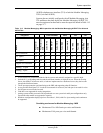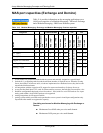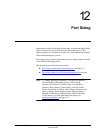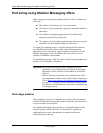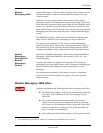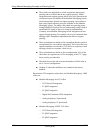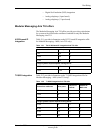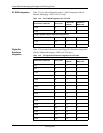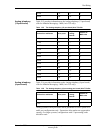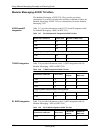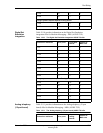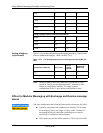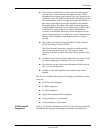
Avaya Modular Messaging Concepts and Planning Guide
12-4 November 2004
Avaya Modular Messaging Concepts and
Planning Guide
! These tables are applicable to switch integrations that support
queuing and to switches that do not support queuing. Switch
integrations that support queuing allow calls to be queued on the
switch until a port is available on the Modular Messaging system.
Switch integrations that do not support queuing cause callers to
hear a busy signal when no ports are available on the Modular
Messaging system. The tables reflect both non-queuing (using
Erlang B and P.02 Grade of Service) and queuing (using Erlang C
model and P.05 Grade of Service) sizing recommendations.
Currently, most Modular Messaging switch integrations do not
support switch queuing. For example, the Avaya Communication
Manager QSIG integration implementation does not support
queuing.
! These calculations are based on the assumption that the system is
used primarily for voice and fax messaging. This version does not
support telephone user interface (TUI) access to corporate e-mail
messages stored on a separate e-mail server.
! These calculations are based on the assumption that 10% of the
subscribers are regular users of fax messaging, with 0.75 3-page
faxes per day per subscriber.
! The tables do not take into account the number of MAS units in
an N+1 server configuration.
! Number of subscriber mailboxes are rounded to the nearest
hundred.
Based on the TUI assigned to subscribers, the Modular Messaging—MSS
offers are:
! Modular Messaging Aria TUI offers
— H.323-based IP integration
— T1 QSIG integration
— E1 QSIG integration
— Digital Set Emulation (DSE) integration
— Analog telephony (4-port board)
— Analog telephony (12-port board)
! Modular Messaging AUDIX TUI offers
— H.323-based IP integration
— T1 QSIG integration
— E1 QSIG integration



